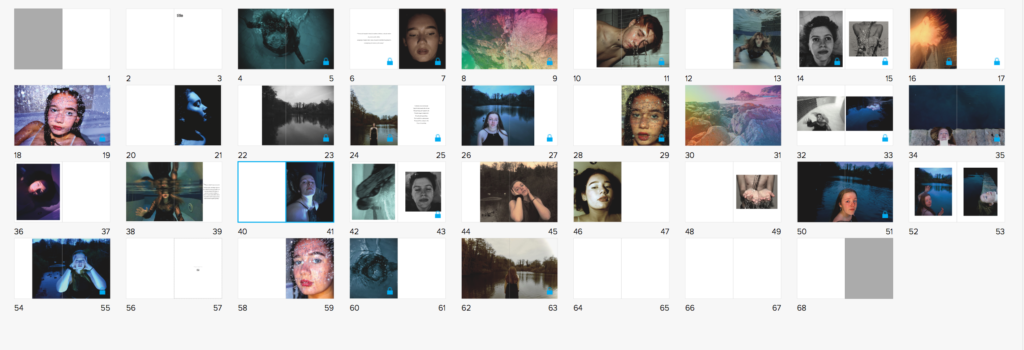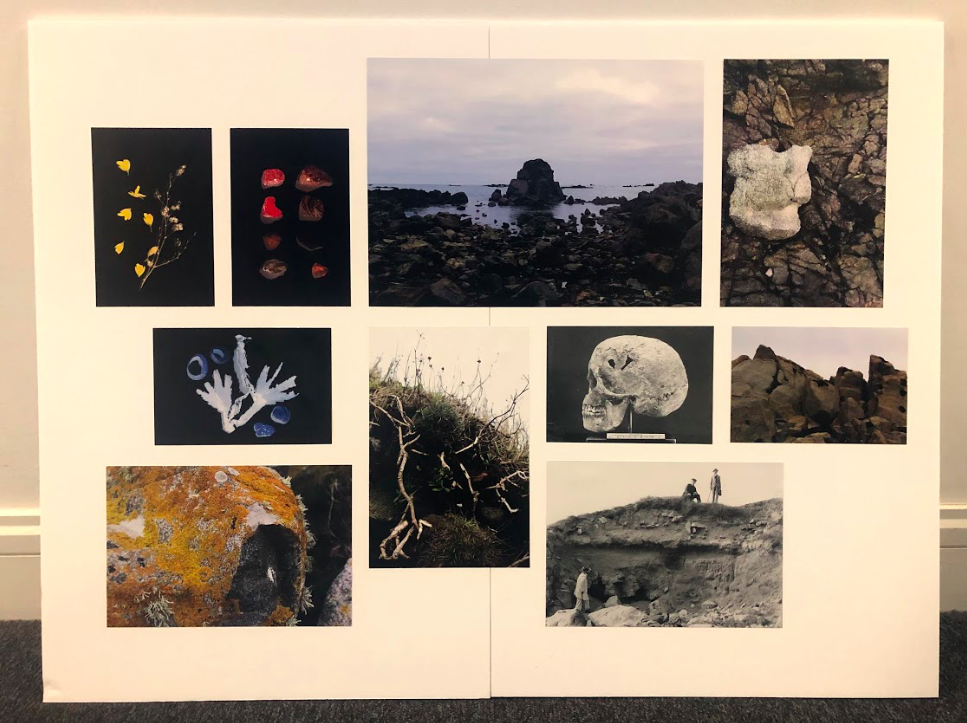The sequencing and development of final photo-book, started off with thinking and discussing the final theme and narrative story which I want to show throughout my book. I believed I wanted it to still have strong connotations to the sublime, but also relations to emotions given off by the images. This then led me to ask myself, which of my shoots were the most successful, yet also work together through a sub- chronological story. To my mind, I believe my most powerful, emotional and successful shoots I have so far, are the sublime water ones. This leads me to choose the primary imagery from 4 shoots, and the other 10 shoots to be used to separate and create a more interesting narrative, yet without removing the theme that I want. I then wanted to choose a handful of 50 images from the primary shoots, and an additional 20 additional edits and images from the shoots less linked to the sublime, in order to create a variation and to keep interest throughout the photo book. These images where then categorise to what sizes would be most complimentary for their simply. So I ended up with a variation of images able to be on a double page spread e.t.c. I was very careful that when I started my composition for the book itself, not to allow two similar images, or similar layouts of images next to each-other and this repetition does not look correct and does not feel natural when going through the book. I wanted the structure to flow easily, yet still have a clear peak interest in each and every one of the images I used landscapes, and underwater images in order to operate many of The portrait’s throughout my work. Although all of the images have a clear conviction and interest of a certain point or another, It was still clearly apparent I needed an interesting set of images to divide up my photo-book. Because of This I decided to add images which have a mystical influence of rocks covered in different developments of rainbow patterns.
The development of my photo-book:
Other options, I decided on my final layout however as there was a good natural flow of colour synergy and the amount fo images within he dynamics of portraiture and landscapes.



My final photo book presentation:

Front cover and back cover:
I chose this image in particular for many reasons, The first being the dark tones and deepness of the water creates a sense fo mystery and reinforces he fact of the book being about pleasure and pain. Secondly the use of water in itself is important as this is a key essence continuously repeated throughout my photo-book. So I believe it is a necessity to demonstrate clearly what will also be seen within my book. The front cover is also quite interesting in that side is quite abstract, it is divided into two half, giving away any information about the rest of the image itself. This plain front allows a clear and informative title, which can easily be shown. However due to the amount of portraits within the book itself, To have a face visible as part of the front cover is important. However due to it only being visible on the back is interesting as it almost creates a narrative experience, and puts the aspect of human vs nature all into one narrative image. This is why I feel as though this image is definitely the most successful.

what my book title is and why:
I chose ‘The Evolution Of Essentialism’ Due to it being a pivotal part of my photography essay, additionally, essentialism has a clear link to water as it is a primary part of living, so also creates a clear indication of my subject from right at the beginning. The evolution part links in well throughout how water can be linked back to romanticism, Pictorialism and surrealism yet still be used to make an array of different sublime imagery seen through portraiture and landscape, as seen within the book.
The stories I used within my final photo-book are the following:
1:“Whereas the beautiful is limited, the sublime is limitless, so that the mind in the presence of the sublime,
attempting to imagine what it cannot, has pain in the failure but pleasure in contemplating the immensity of the attempt”
2:’A meditation rose on me that night
Upon the lonely mountain when the scene
Had passed away, and it appeared to me
The perfect image of a mighty mind,
Of one that feeds upon infinity,
That is exalted by an under-presence,
The sense of God, or whatso’er is dim
Or vast in its own being’
3:“Whatever is fitted in any sort to excite the ideas of pain, and danger, that is to say, whatever is in any sort terrible, or is conversant about terrible objects, or operates in a manner analogous to terror, is a source of the sublime; that is, it is productive of the strongest emotion which the mind is capable of feeling.”
4:’The sounding cataract Haunted me like a passion: the tall rock,The mountain, and
the deep and gloomy wood,
Their colours and their forms, were then to me An appetite;
a feeling and a love’
































